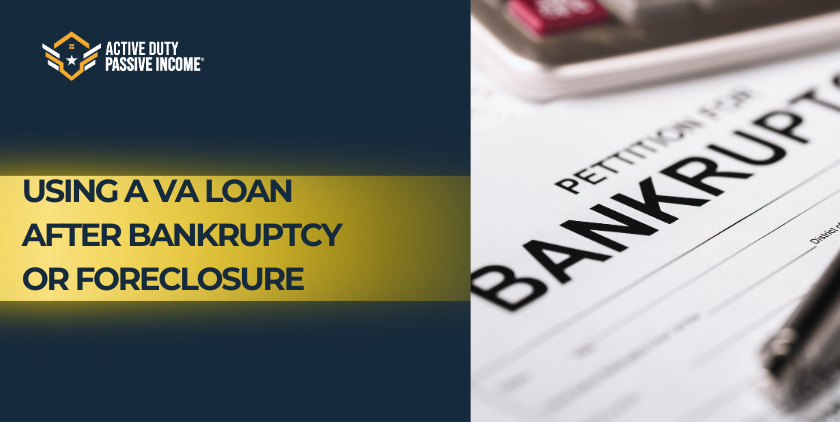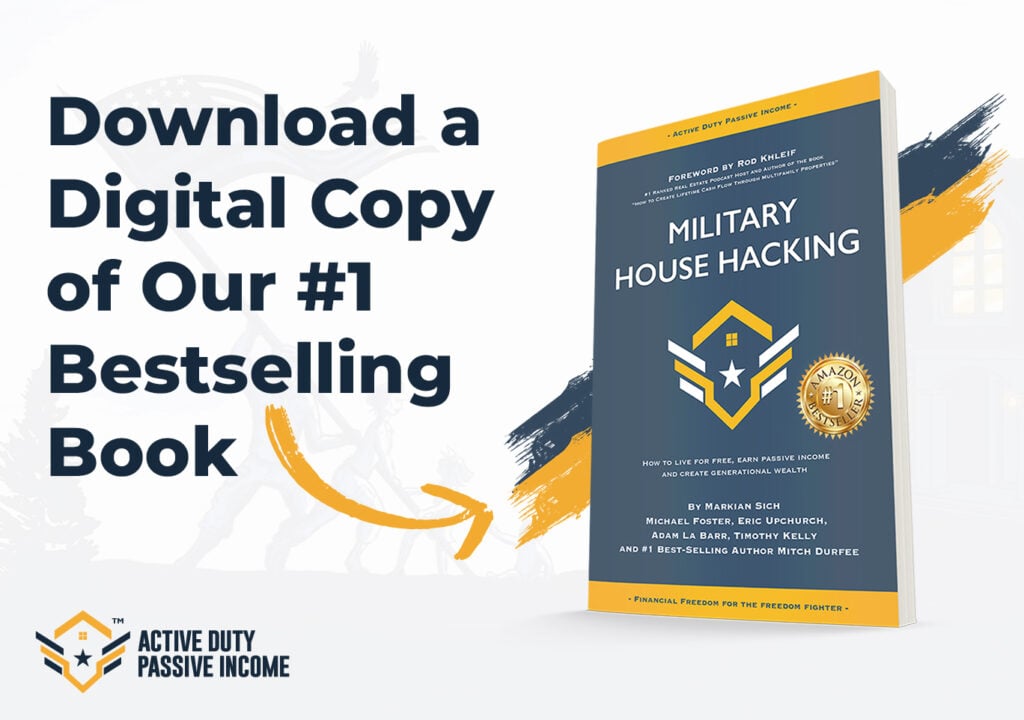Did you know that even after bankruptcy or foreclosure, your dream of owning a home can still become a reality with a VA loan?
Navigating the financial aftermath of a bankruptcy or foreclosure can be daunting. The scars left by these events often extend beyond immediate financial hardship, impacting your ability to secure loans and rebuild credit. However, for veterans and active-duty service members, the VA loan program offers a path to homeownership even after these financial setbacks. Understanding how to use a VA loan after experiencing bankruptcy or foreclosure is crucial to getting back on track and securing your future.
Understanding VA Loans
Before delving into the specifics of post-bankruptcy or post-foreclosure VA loans, it’s essential to understand what a VA loan is. The U.S. Department of Veterans Affairs (VA) provides VA loans, which are mortgage loans issued by private lenders and backed by the VA. These loans offer several advantages, including no down payment requirement, competitive interest rates, and no private mortgage insurance (PMI). For many veterans and service members, VA loans are a lifeline to homeownership.
The Impact of Bankruptcy and Foreclosure
Bankruptcy and foreclosure are significant financial events that can severely affect your credit score and financial stability. Bankruptcy, whether Chapter 7 or Chapter 13, involves a legal process where a debtor can discharge or reorganize their debts. Foreclosure occurs when a lender takes possession of a property due to the borrower’s failure to keep up with mortgage payments. Both events can stay on your credit report for up to seven years, making it challenging to obtain new credit or loans.
Reestablishing Creditworthiness
Rebuilding credit after bankruptcy or foreclosure is the first step towards securing a VA loan. Here are some strategies to improve your creditworthiness:
- Pay Bills on Time: Timely payments on all your bills, including utilities, credit cards, and any remaining loans, will help rebuild your credit score.
- Open a Secured Credit Card: A secured credit card, backed by a cash deposit, can help demonstrate responsible credit use.
- Keep Credit Utilization Low: Aim to use no more than 30% of your available credit to improve your credit score.
- Monitor Your Credit Report: Regularly check your credit report for errors and dispute any inaccuracies with the credit bureaus.
VA Loan Eligibility Post-Bankruptcy
Eligibility for a VA loan after bankruptcy depends on the type of bankruptcy filed and the time elapsed since discharge.
Chapter 7 Bankruptcy
For Chapter 7 bankruptcy, which involves liquidating assets to discharge debts, the VA requires a waiting period of two years from the date of discharge. During this period, it’s essential to reestablish credit by demonstrating responsible financial behavior.
Chapter 13 Bankruptcy
Chapter 13 bankruptcy, which involves a repayment plan over three to five years, has a shorter waiting period. The VA allows borrowers to apply for a VA loan after making 12 months of on-time payments according to the repayment plan. Additionally, the borrower must obtain approval from the bankruptcy court to take on new debt.
VA Loan Eligibility Post-Foreclosure
If you’ve experienced a foreclosure, the waiting period to apply for a VA loan is typically two years from the date the foreclosure was completed. Like with bankruptcy, this period is an opportunity to rebuild your credit and financial stability.
Applying for a VA Loan After Bankruptcy or Foreclosure
Once the waiting period has passed and you’ve worked on improving your credit, the next step is to apply for a VA loan. Here’s a step-by-step guide to the application process:
- Obtain Your Certificate of Eligibility (COE): The COE verifies your eligibility for a VA loan based on your service history. You can obtain it through the VA’s eBenefits portal, by mail, or with the help of a VA-approved lender.
- Find a VA-Approved Lender: Not all lenders offer VA loans, so it’s essential to find a lender experienced in working with veterans and familiar with the nuances of VA loans.
- Prequalification: Before formally applying, get prequalified with your lender. This step involves a preliminary review of your financial situation to estimate how much you can borrow.
- Gather Documentation: Prepare necessary documents, including proof of income, tax returns, bank statements, and any paperwork related to your bankruptcy or foreclosure.
- Submit Your Application: Complete the loan application with your lender, providing all required documentation.
- VA Appraisal: The VA will conduct an appraisal to ensure the property meets its standards and is worth the loan amount.
- Underwriting and Approval: The lender will review your application and the appraisal report during the underwriting process. If everything checks out, you’ll receive loan approval.
- Closing: Once approved, you’ll proceed to the closing, where you’ll sign the final paperwork and take ownership of your new home.
Tips for a Successful VA Loan Application
To increase your chances of a successful VA loan application after bankruptcy or foreclosure, consider these tips:
- Improve Your Debt-to-Income Ratio: Lenders look at your debt-to-income (DTI) ratio to assess your ability to repay the loan. Pay down existing debts and avoid taking on new debt to keep your DTI ratio low.
- Save for Closing Costs: While VA loans don’t require a down payment, there are still closing costs to consider. Save in advance to cover these expenses.
- Be Transparent: Be upfront with your lender about your bankruptcy or foreclosure history. Transparency helps build trust and ensures that all necessary information is considered during the application process.
- Seek Professional Advice: Working with a financial advisor or a VA loan specialist can provide valuable insights and guidance tailored to your situation.
Benefits of Using a VA Loan After Bankruptcy or Foreclosure
Despite the challenges posed by bankruptcy or foreclosure, using a VA loan offers several benefits:
- No Down Payment: VA loans allow you to purchase a home without a down payment, making homeownership more accessible.
- Competitive Interest Rates: VA loans typically offer lower interest rates compared to conventional loans, saving you money over the life of the loan.
- No PMI: VA loans do not require private mortgage insurance, reducing your monthly mortgage payment.
- Lenient Credit Requirements: VA loans are more forgiving when it comes to credit scores, making it easier to qualify even after financial setbacks.
Common Misconceptions
There are several misconceptions about using a VA loan after bankruptcy or foreclosure. Here are a few clarified:
- Myth: You can’t get a VA loan after bankruptcy or foreclosure. Fact: While there are waiting periods and credit rebuilding requirements, it is possible to obtain a VA loan after these events.
- Myth: The process is too complicated. Fact: While the process requires attention to detail, working with a knowledgeable lender can simplify it significantly.
- Myth: You need a perfect credit score. Fact: VA loans are designed to be accessible to veterans with less-than-perfect credit, as long as other eligibility criteria are met.
Real-Life Success Stories
Hearing from other veterans who have successfully obtained VA loans after bankruptcy or foreclosure can be inspiring. Here are a couple of real-life examples:
- John’s Story: After a Chapter 7 bankruptcy due to medical expenses, John, a Navy veteran, focused on rebuilding his credit. Two years after his bankruptcy discharge, he applied for a VA loan with the help of a VA-approved lender. With a solid financial plan and a reasonable credit score, John was able to purchase a new home for his family, achieving stability and peace of mind.
- Mary’s Story: Mary, an Army veteran, faced foreclosure during the financial crisis. Determined to recover, she spent the next few years improving her credit and saving money. Two and a half years after her foreclosure, Mary applied for a VA loan and successfully bought a modest home. Her persistence and the benefits of the VA loan program made homeownership a reality once again.
Conclusion
Using a VA loan after bankruptcy or foreclosure is not only possible but also a viable pathway to reclaiming financial stability and achieving homeownership. By understanding the eligibility requirements, focusing on rebuilding credit, and working with experienced professionals, veterans can leverage the benefits of the VA loan program to overcome past financial challenges.
The journey may be challenging, but the reward of owning a home and securing your family’s future makes it worthwhile. If you’re a veteran or an active-duty service member who has faced bankruptcy or foreclosure, don’t lose hope. The VA loan program is designed to support you, providing the tools and opportunities needed to rebuild and thrive.
By taking proactive steps and staying informed, you can navigate the complexities of obtaining a VA loan and turn the dream of homeownership into a reality, even after bankruptcy or foreclosure. Remember, your service to the country has earned you this benefit—now it’s time to use it to build a better financial future.









